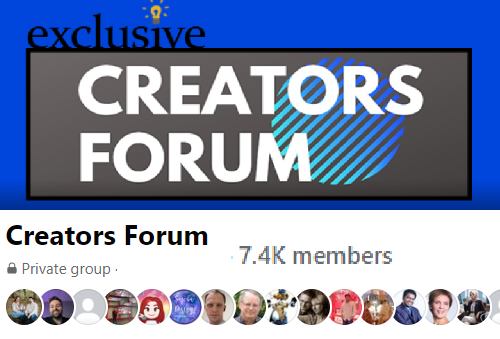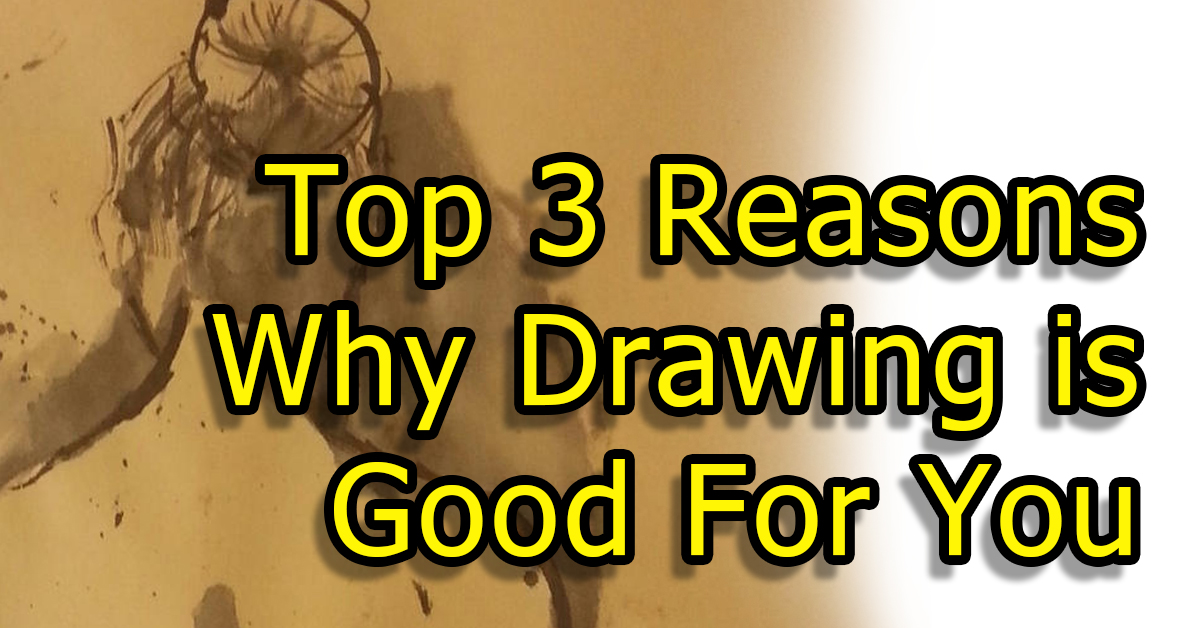In modern times, we have studied the effects that drawing has on our brains and the results are truly remarkable! Science-backed evidence now suggests that if you set aside time to draw on a regular basis, it allows you access to a plethora of mental health benefits. Find out below why drawing is good for you.
1. Drawing Improves Communication Abilities
The 1st reason why drawing is good for you is because it allows you a new route of communication with others.
You know how they say a picture is worth a thousand words? That’s because drawings transcend speech. They stand on their own! Drawing is one of the most ancient and integral skills that human beings have practiced. Cave paintings, clay sculptures and tablets are the longest lasting testament of our intelligence. Besides through writing and architecture, its one of the only ways we have to understand ancient people. We can still find them in pristine condition.
Before full languages and alphabets were conceived, humans were using pictures to convey what they had achieved or what they believed. The great hunt, a tribal war, and their gods and goddesses were always common themes across the world. All this to say, drawing allows you to tell complex stories and share ideas with people that don’t even speak your language.

Lascaux Cave painting (est. 17,000 years old)
Actively drawing a picture or a diagram can also be a great icebreaker to help you be more approachable and open-minded to those you are working with. It demonstrates to those around you that you have internalized the situation and can accurately express your solution in a clear and logical manner. It will increase their respect for you if you do a good job. Check out this ancient Babylonian world map in the British Museum’s collection:

2. Drawing Improves Mood
The 2nd reason why drawing is good for you is because it helps you to regulate your emotional state. When tackling a low-risk challenge like a sketch and succeeding at some aspect of it, you will experience an increased blood flow to the reward center in your brain. You will also feel a general increased level of competence and confidence. You don’t even have to show anybody your sketches if you don’t want to, it’s not a performative skill on stage. Your mess ups won’t be on display, just crumple them up and throw them in the trash bin! It will allow you to just let loose if you give yourself the permission to!
A survey taken at the Fine Arts Museum of San Francisco gauged how people felt after a sketching session at their facility. 67% of people expressed a feeling of calm regardless of their skill level. A secret to achieving this is to not be overly focused on the outcome of your drawing (especially if you are just a beginner) but to just have fun with it. This shows that being better at drawing is not a requirement in receiving the mental health benefits.

“Children are natural artists and, when given the opportunity, most are highly absorbed in the act of drawing from a very young age.” (Gardner and Winner, 1982; Jolley et al., 2000). The NIH posted this study published by Jennifer Drake of the University of New York on the effectiveness of drawing to improve moods in kids ages 6-12.
They were told to think of a sad situation first and then a group of kids was instructed to express their feelings of the sadness in a drawing and the second group was instructed to draw anything they wanted. The study found that drawing was very useful as a distraction mechanism (like playing games) that would allow the child to regulate their short term emotions very quickly to a happier mind state. What was interesting was that it depended on the child’s drawing topics. The group that was expressing themselves through their drawings improved their mood much less than those who were given free reign to construct their own drawing.
A control group among the 2nd group was instructed to copy a line drawing, and their mood also improved less than those doing the freehand drawings from their imaginations. It shows that the act of freehand drawing plays a big role in mood regulation.
3. Drawing Improves Cognitive Function
The 3rd reason why drawing is good for you is because it improves your brain health. Drawing is an exercise that both engages the left and right hemispheres of the brain at once. Each time you draw you are creating new neural connections, strengthening your mind with each one. In life drawing especially, it requires you to slow down and take a moment to truly understand what you are looking at, enough to replicate it on paper.
Many people THINK they know things, but when asked to draw them, it has the power to clearly expose their “knowledge” as a hazy half-baked idea. It’s not something you can fake! A sketching habit strengthens fine motor skills and hand-eye coordination because it requires you to try to accurately depict an image you have seen with your eyes using your hand. In the process of sketching you are naturally training your brain to do a few things in order to get better at it, and thus increasing your baseline abilities that can extend across all of your life’s endeavors in a silent but meaningful way.
1. The Mindfulness Increase- (*Disclaimer: You do NOT need to connect mindfulness meditation with any sort of religious affiliation to feel the benefits in your drawing!) Drawing from life is a type of Mindfulness meditation all to itself. It requires you to sit down quietly and thoroughly observe what you are trying to copy onto paper. You will have to stop talking very often and focus your attention upon one thing in order to get the drawing right. It’s like cooking where it has it’s own reward/pain mechanism built in, if you mess up, you burn the food (or make a bad drawing in this case) so it forces you to get better.
Traditional Mindfulness meditation without drawing is another thing entirely, but it is directly related and can be very helpful for your next drawing session. You can use meditation to more effectively understand what you are seeing with your eye because it assists with getting you to a baseline of calmness so you are more receptive to the demands of the task. This type of meditation I am referring to is the kind practiced in far East Asia for thousands of years.
You may want to do this before you start drawing so you can understand your subject matter to the greatest extent of your ability and begin with a step in the right direction. A key finding that has only been provable recently is the real effects of a consistent and effective meditation practice. Using brain scanners, we now know that meditation techniques such as those similar to Zen Buddhism and Eckhart Tolle in this guided meditation have a profound effect on human consciousness and emotion regulation. If you are interested in more info on this field of study I will be writing another blog post soon to expand on how I use it and what I have learned about it.

Ponder this:When you dream at night, your mind produces life-like 3D environments for you for hours, yet when you wake up, many of us can practically lose this ability entirely. How weird. The same organ that produces this experience just appears to shut off. This is largely due to our brains entering a Theta wave state when we sleep and our innate subconscious intelligence rising into our awareness displaying what it knows. It’s not so crazy to think that we have these abilities when we see AI image generators like MidJourney and Dall-e creating life-like scenes, is it? After all, somebody programmed it to do that. So remember- before you sketch, take 10 deep breaths and see where it takes you!
2. The Perception Increase- There have been many books throughout the ages on this topic because it is so important. This is a skill that only an open and accepting mind can master to the fullest, that is why Mindfulness is an important groundwork to have. Do your best drawings you have to “show up for work” in a present state of mind and in tune with your body and environment. After all, the objects in your still-life are technically the environment. Increased Perception is a consequent flowering of Mindfulness.
As you spend more time observing and copying from nature, you will have no choice but to understand its intricacies and how they do not waiver, especially the effects of light and shadow. If you memorize them you can apply them and start your own freehand drawings and create your own characters and worlds. You will begin to notice details in new things that you see with your eyes instantly and be able to place them within logical frameworks and patterns more readily. When you draw from life more and more, you may notice your level of perception can begin to outperform people who do not have their own sketching practice. When you want to perceive more effectively during the sketch, you must also introduce some thoughtforms into the equation from the 5 Elements of Art.
Ask yourself: As you look at the object, bring up some light questions as you are drawing and let the answers rise from your innate intelligence… I believe you have what it takes to be a great artist!
“What basic geometrical forms is it made of?” “Are there any patterned markings or textures on its surface?” “Where does the light hit the object and where are the core shadows?” Trusting yourself in this process and being open to making mistakes is critical to your development.
3. The Memory Increase- Drawing has been show to enhance the memory of those who practice according to this study from the University of Waterloo. 30 nouns were presented to each person and their recollection of the nouns was tested afterwards. It was observed that those who drew pictures of the nouns instead of writing words performed better! It increased the memory of both younger and older adults in the different experiments they conducted.
More Ways Why Drawing is Good For You
I guarantee you that drawing does more than what I’ve written about in this short article! Now it’s up to you to put it into practice and FEEL the benefits of why drawing is good for you. You can’t just simply read about it!
If you have been thinking of starting your own drawing practice, I have created this program to get you started on the right path easily (and learn the 5 Elements of Art I mentioned).
Buy “Sketching Made Easy” for $29!

-Kevin Gardin









